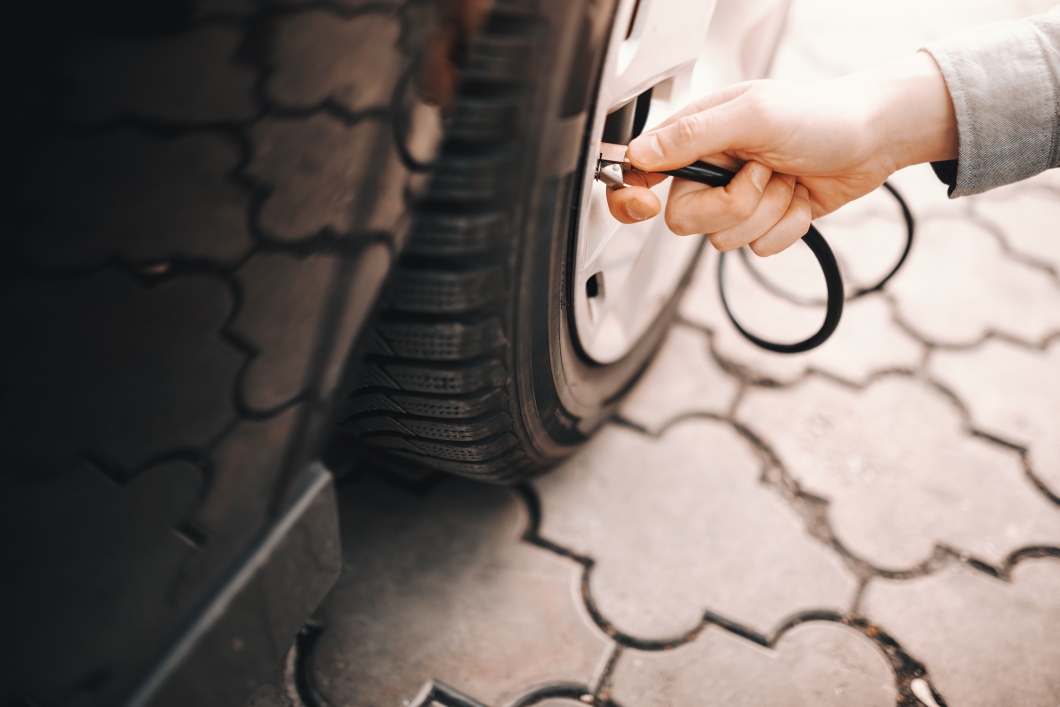Your tires withstand a constant and significant amount of pressure and friction each and every day, no matter how far or fast you drive. Over time, tires will naturally wear down due to this constant friction and pressure, which can then lead to a number of safety risks, including a flat or blown-out tire, as well as reduced vehicle performance. Knowing some of the biggest warning signs of worn-out tires can help you figure out when you need to head to a tire dealer to have a new set installed or the current set checked out. When put on correctly, your tires should be wearing down at an even pace. If you’ve noticed that your vehicle tires have uneven tire wear, read on for some tips for helping to reduce that uneven wear pattern.
Cracks
One of the largest and easiest to spot warning signs of tires that have reached, or are about to reach, the end of their lifespan is if you can spot cracks and other forms of physical damage on the sidewall of the tire itself. Cracks, even spiderweb cracks that appear superficial, represent wear, damage, and brittleness in the rubber of your tire – which can happen due to age and constant use, making an air leak or blowout much more likely. Avoid driving on cracked tires as much as possible, and talk to a tire repair company as soon as you can.
Tire Pressure
All tires come with a specific air pressure recommendation that should be followed for the tires to work perfectly. If one or more of your tires is over or underinflated, it’s going to distort the shape of the tire and cause uneven wear patterns. It’s a good idea to double-check the air pressure of your tires a couple of times a month to ensure that they’re inflated to the proper recommendation. That recommendation can typically be found on the outer side of your tire.
Bubbling
Another clear sign that your tires need to be replaced is if you can spot air bubbles forming on the tread or along the sidewall. These air bubbles will occur where the strength of the rubber has weakened, forcing the air pressure within the tire outwards. Just like cracks, these are leaks and blowouts waiting to happen, and your tires should be replaced immediately.
Alignment
In order for your tires to work properly, they need to be situated on your car in a specific fashion. This is referred to as your vehicle’s alignment, and having any bit of it out of whack can result in damage to your vehicle and your tires. For example, if the camber of your front tires is set too far in, you’ll notice that there is excessive tire wear on the front portion of your tires. Getting a professional wheel alignment will straighten out that problem.
Tire Rotation
The majority of vehicles operate in a two-wheel-drive fashion. For most sedans and coupes, the front two tires are responsible for steering. In pickup trucks, the back two tires are typically responsible for steering while the truck is in a two-wheel-drive position. Over time, the steer tires on a vehicle will start to wear faster than the non-steer tires. It’s important that you rotate the position of both the front and back tires every six months to a year.
Rattling and Shaking
Any sort of vibrations that come up from your tires can point to several issues. More often than not, shaking while driving can be attributed to improperly balanced tires – which means that your tires are pointing away from each other, thus pulling on your vehicle’s suspension system and wearing themselves down at a faster rate. Your balance can be adjusted fairly quickly to address this problem.
However, keep in mind that vehicle shaking can also be caused by uneven or irregular wear of your tire’s treads. Suppose you look at your tires and one edge of the tread seems to be severely worn down compared to the rest. In that case, your tires are likely suffering from another issue that will need to be addressed – and depending on the severity of the uneven wear, you may have to rotate or even replace your tires entirely. You can also use a penny to quickly determine whether or not the treads of your tires are sufficient. If the coin is not submerged in the tread ribs, your car may be in the need of some new tires.
Suspension Issues
Your vehicle suspension plays a big role in how evenly your tires wear. If you notice that there is cupping, also referred to as scalloping, of the tires, it may be due to the failure of certain suspension parts on your vehicle. You may even notice that your vehicle is starting to pull to one side when driving. Both the struts and shocks can wear out over time and cause your tires to undergo more wear and tear than normal. Fixing these suspension issues will take care of the uneven wear of your tires.
Sometimes your vehicle may not run as you intend it to. If you’ve noticed that your tires seem to be wearing unevenly, it’s important that you be proactive in finding the source of the problem and fixing it. The above are just a few of the many different causes of uneven tire wear that you’ll want to start looking at to determine your car’s specific issue.

